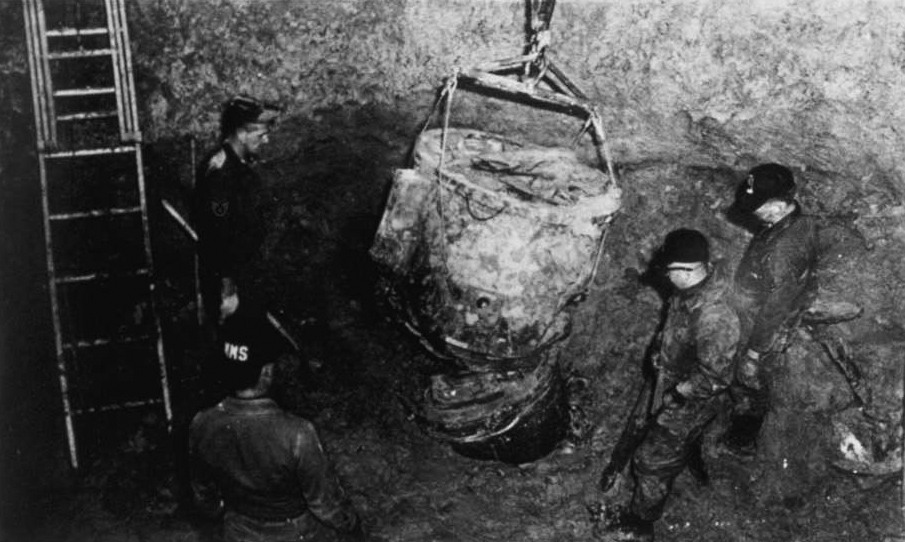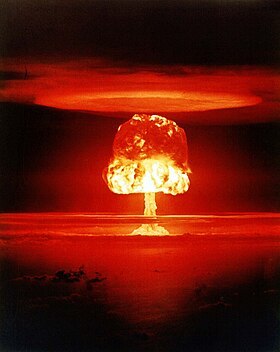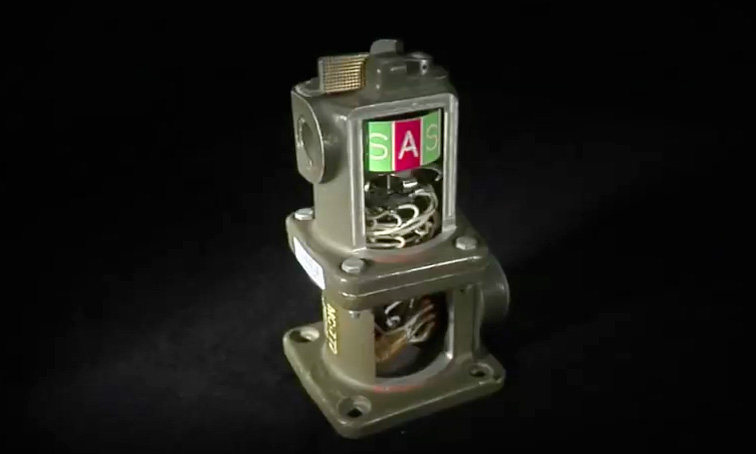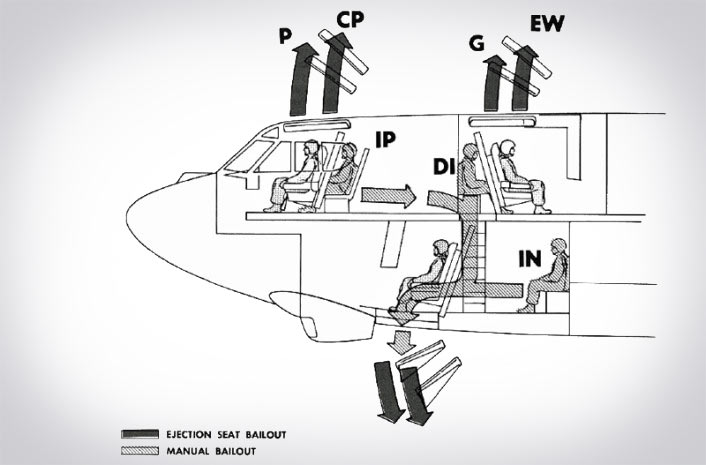This single micro-switch, a small, light, low-voltage device whose only job is to flip from SAFE to ARM, is the only reason why the East Coast is still habitable, and why we're still alive.
January 23, 1961, 12:15 PM
A B-52G heavy bomber of the Strategic Air Command lines up behind a KC-135 tanker aircraft off the coast of North Carolina. As the refueling boom operator maneuvers the fuel boom into the receptacle in the B-52's nose, he notices a pink stream of liquid flowing out of the bomber's right wing. A fuel leak. The refueling is aborted, and the big bomber turns to return to base. Upon reaching the holding pattern at 15,000 feet of altitude First Lieutenant Adam Mattocks notices that 37,000 pounds of fuel have been lost in 3 minutes. He immediately turns the beefy plane towards Seymour Johnson Air Force Base and initiates an emergency descent. This B-52G was the first B-52 off the line with integral fuel tanks in the wings. This gave the plane immense range, but increased stress on the wings. As the bomber descends through 10,000 feet over the town of Goldsboro the right wing spar finally gives out and the entire wing, 92 feet long and carrying 210,000 pounds of fuel and turbojets, rips off of the fuselage. "Eject, Eject, Eject!" Mattocks pulls the 'emergency release' lever on the roof hatch and it flies off, carried by the howling wind. He takes a last look into the cabin and leaps out the the burning aircraft as it passes through 9,000 feet. Floating down on his parachute, he sees the burning bomber tumble down through the night and explode as it hits the ground. He counts five parachutes, including his. There should've been eight. |
| A 1994 crash of a B-52 (Not the Goldsboro crash) |
The two Mark 38 Mod 2 nuclear devices, each of a yield of 3-4 megatons (250 times the Hiroshima bomb) separated themselves from the disintegrating bomber and plummeted towards the towns of Goldsboro and Faro. One of the safety measures in the Mark 38 weapon is that the bomb's parachute will only deploy if the bomb is fully (or almost fully) armed. One of the bombs deployed its parachute. The parachute got tangled in a tree, but the bomb hit the ground and sunk two feet down into the dirt. In a 2013 Freedom of Information Act release it was found that three of the four firing devices had triggered. Had the small, low-voltage, dynamo safe/arm switch been triggered, the bomb would've detonated. The bomb had auto-armed the other three devices either as it fell or during impact.
The other bomb, once liberated from the falling wreckage, failed to deploy its drag 'chute and fell at terminal velocity, reaching 700 mph (nearly supersonic) before hitting a muddy field and disintegrating, its tail being found 20 feet below the surface, and the plutonium and uranium first stage being found at a depth of 18 feet. The second stage of the bomb was estimated to be 180 feet down (+/- 10 feet), and never was recovered (it's still there). The instrumentation of the bomb was recovered, and it was found that the bomb was fully armed. Lt. Jack ReVelle, the bomb disposal expert responsible for disarming the bombs, remembers the moment the arming switch was found. "Until my death I will never forget my sergeant saying, 'Lieutenant, we found the arm/safe switch.' And I said, 'Great.' And he said, 'Not great. It's on Arm.'" The force of the impact armed the bomb, but the high-explosive compression stage failed to detonate. According to a Stanford paper, no one knows why it didn't detonate. It was armed and ready to detonate. It should have detonated! Had that stage detonated a 3 to 4 megaton nuclear explosion would have occurred, most likely starting WWIII.
 |
| The tail section of the bomb being recovered. |
 |
| The Castle Union shot; a 4 megaton bomb similar to the Mark 38's |




3 comments:
Wild to think that a nuclear war could've easily been started by the US on US soil. Great summary of the crash, as always. Would the US not have realized that it was their own weapon?
I think the news of the blast would've reached the White House far before the realization that it was a US device,but there still might've been time to realize the mistake. The Atlas-E ICBM in service at the time had a ready time of 15 minutes, and maybe, just maybe 15 minutes would've been enough to get the news that it was a US device to the White House (or SAC) and avert the crisis.
This is a lot of some very detailed information on some subjects that we have not covered in such great detail. Reading your post enlightened me with a lot of new and interesting information!
Post a Comment